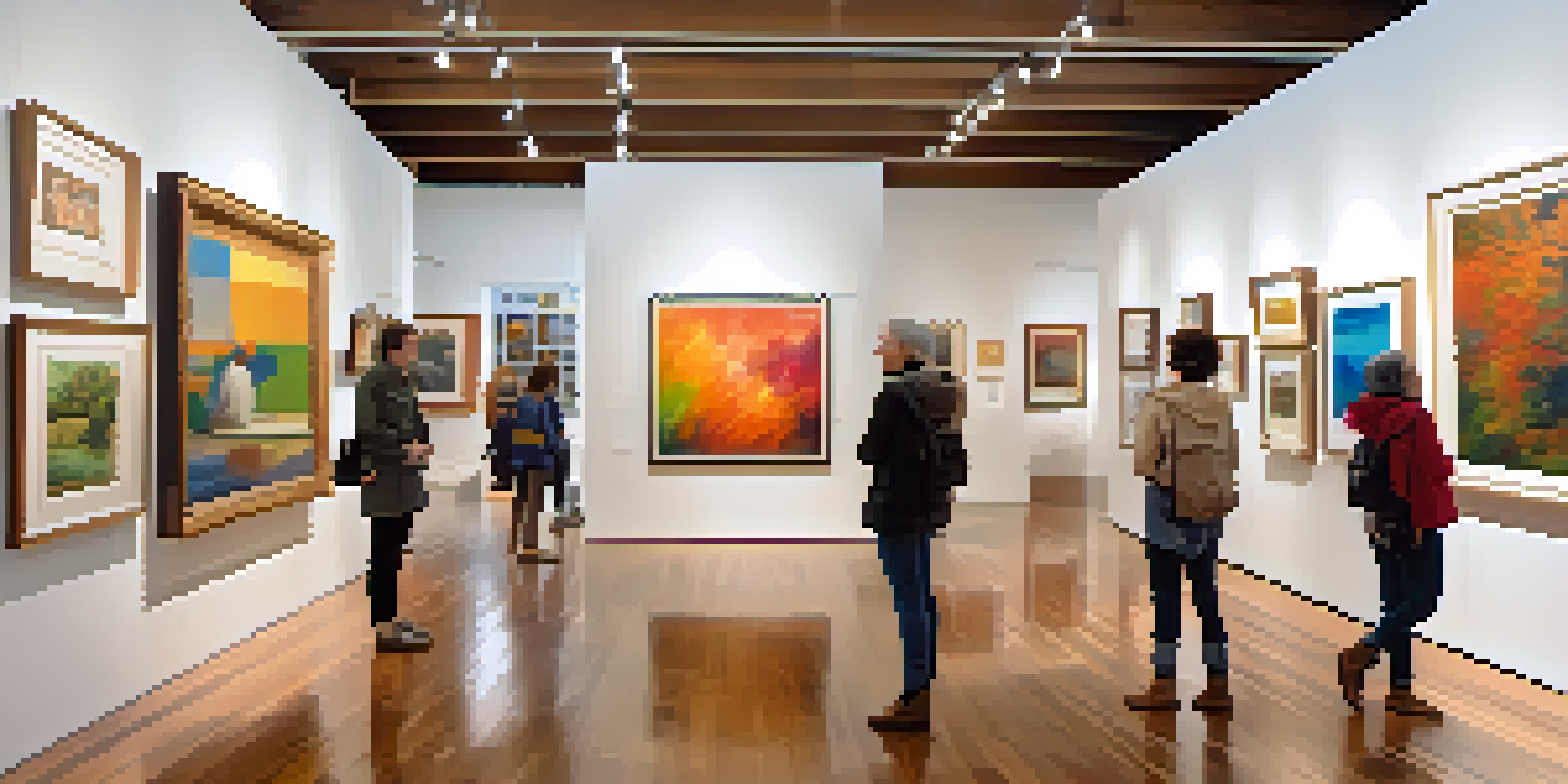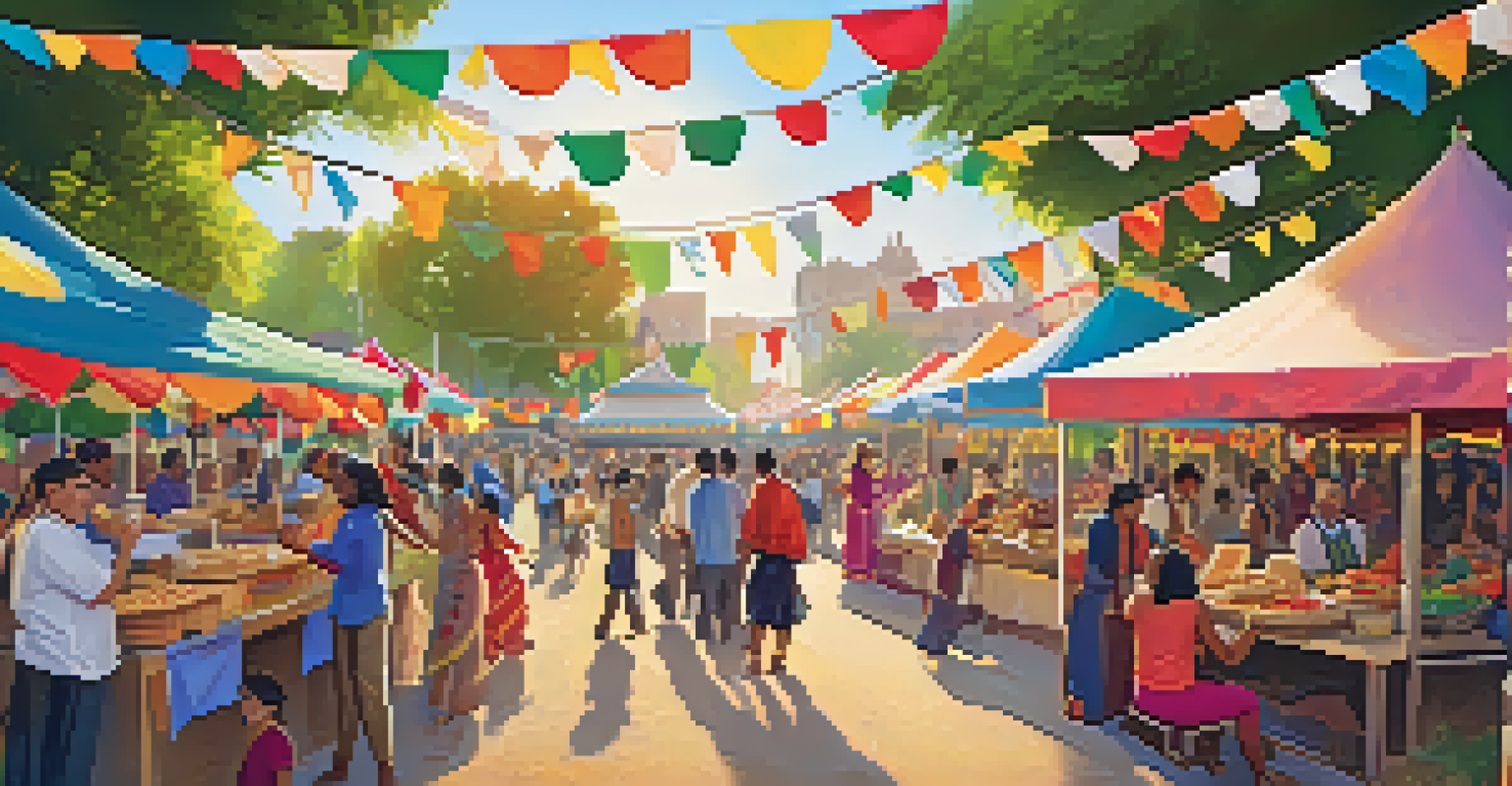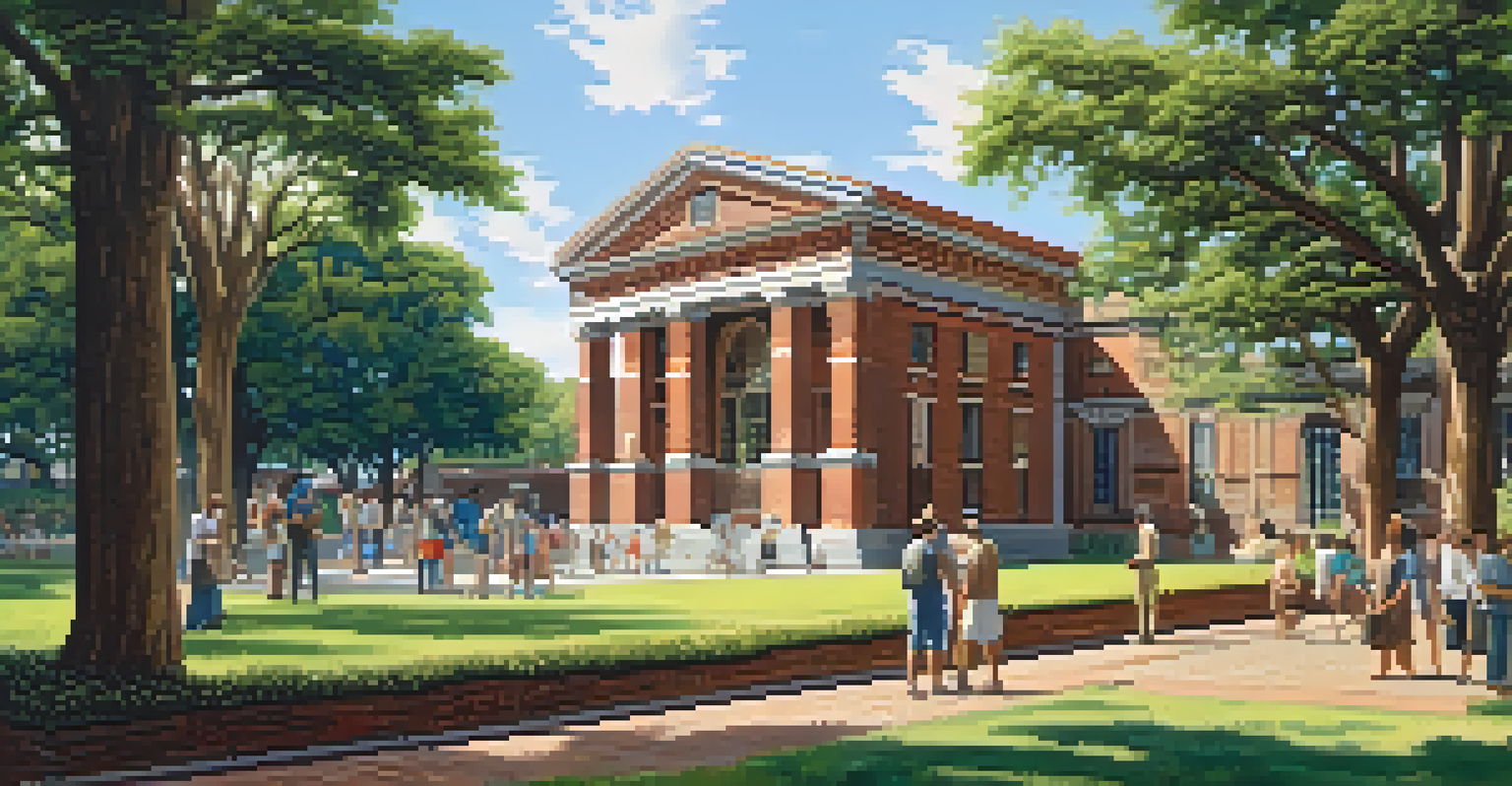Cultural Institutions Preserving the City's Rich Heritage

Museums: Guardians of History and Art
Museums serve as vital custodians of history and art, showcasing our city's past and present. They not only display artifacts but also tell stories that connect us to our roots. By hosting exhibitions and educational programs, museums engage the community and foster a deeper understanding of cultural heritage.
Museums are not just a place to store artifacts; they are living institutions that connect us to our past and shape our future.
For instance, the local history museum might feature exhibits on the city’s founding, highlighting significant events and figures. This not only preserves history but also inspires pride among residents. Furthermore, interactive exhibits allow visitors of all ages to immerse themselves in the stories, making learning an engaging experience.
As guardians of our cultural narrative, museums play a crucial role in preserving the identity of our city. They provide a space where diverse voices can be heard, ensuring that our collective history is not lost. In this way, they become not just repositories of artifacts, but vibrant centers of community engagement.
Libraries: The Heart of Knowledge and Culture
Libraries are more than just places to borrow books; they are community hubs that preserve knowledge and culture. They offer resources that reflect the city’s heritage, including local literature, historical documents, and cultural programs. By providing access to information, libraries empower individuals to engage with their cultural identity.

Consider a library that hosts local author readings or workshops on traditional crafts. These initiatives not only celebrate local talent but also bring the community together, fostering connections among residents. Libraries also often curate collections that highlight the unique stories of different cultures within the city.
Museums Preserve Our Cultural Heritage
Museums engage communities by showcasing artifacts and stories that connect us to our history.
In this digital age, libraries continue to adapt, offering online resources and virtual programs. By embracing technology, they ensure that the rich heritage of our city remains accessible to everyone, regardless of their location. This commitment to inclusivity reinforces the library's role as a cornerstone of cultural preservation.
Cultural Centers: Fostering Artistic Expression
Cultural centers are vibrant spaces that promote artistic expression and cultural exchange. They often host events, performances, and workshops that celebrate the diverse traditions within the community. By providing a platform for artists and performers, these centers play a vital role in preserving and promoting local culture.
The importance of preserving our cultural heritage is vital for future generations to understand the richness of our history and identity.
For example, a cultural center might organize a festival showcasing traditional music and dance, inviting the community to participate and learn. Such events not only entertain but also educate attendees about the significance of these art forms. They create a sense of belonging and pride in cultural heritage.
Moreover, cultural centers often collaborate with schools and organizations to offer educational programs. This outreach ensures that younger generations are exposed to their heritage, allowing them to carry these traditions forward. In doing so, cultural centers help to weave a rich tapestry of community identity.
Historical Sites: Living Testimonies of the Past
Historical sites offer a tangible connection to our city’s past, serving as living testimonies of significant events and people. These sites, ranging from monuments to preserved buildings, allow us to walk in the footsteps of those who came before us. Each site tells a story, helping visitors and residents alike understand the historical context of their surroundings.
Imagine visiting a historic district where each building has its own unique story to tell. Guided tours can provide insights into the architectural styles and cultural influences that shaped the area. This immersive experience deepens appreciation for the city’s heritage and encourages preservation efforts.
Libraries Empower Cultural Knowledge
Libraries serve as community hubs that provide access to local literature and cultural programs, fostering individual engagement with heritage.
Additionally, many historical sites offer educational programs for schools and community groups. By engaging with the past in this way, participants develop a sense of responsibility to protect these sites for future generations. Ultimately, historical sites help to foster a collective memory that enriches community identity.
Festivals: Celebrating Cultural Diversity
Festivals are vibrant celebrations that showcase the cultural diversity of our city. They bring together people from various backgrounds to share traditions, food, music, and art. These events not only entertain but also educate attendees about the rich tapestry of cultural heritage that exists within the community.
For instance, a multicultural festival may feature performances from different cultural groups, allowing participants to experience a variety of artistic expressions. Food stalls offer a taste of global cuisines, inviting everyone to explore new flavors. Such events foster understanding and appreciation of different cultures, creating a sense of unity.
Moreover, festivals often engage local artists and vendors, supporting the community's economy while promoting cultural pride. By celebrating cultural diversity, these events contribute to a more inclusive society, where everyone feels valued and heard. In this way, festivals become a powerful tool for cultural preservation.
Art Galleries: Showcasing Local Talent
Art galleries play a crucial role in preserving and promoting local talent and cultural expressions. They provide a platform for artists to showcase their work, often reflecting the unique identity and experiences of the community. Through exhibitions and installations, galleries invite us to engage with art that tells our city's stories.
Imagine walking through a gallery featuring works that explore themes of heritage and identity. Each piece offers a glimpse into the artist's perspective, inviting viewers to reflect on their own connections to the city. Galleries often host opening receptions and artist talks, creating opportunities for dialogue between artists and the community.
Cultural Centers Promote Artistic Unity
Cultural centers host events and workshops that celebrate diverse traditions, helping to weave a rich tapestry of community identity.
In addition to showcasing established artists, many galleries also support emerging talent through mentorship programs and community initiatives. By investing in the next generation of artists, galleries ensure that the creative spirit of our city continues to thrive. This commitment to local talent strengthens the cultural fabric of the community.
The Role of Schools in Cultural Preservation
Schools play an integral role in preserving culture by educating students about their heritage and traditions. Through curriculum and extracurricular programs, students learn about local history, arts, and customs. This education fosters a sense of pride and belonging, encouraging young people to connect with their cultural roots.
For example, a school might incorporate local history into its social studies curriculum, allowing students to explore their city's past. Field trips to museums or historical sites can also enhance this learning experience, making history come alive. By engaging students in this way, schools help to cultivate a deeper appreciation for cultural heritage.

Moreover, many schools partner with local cultural institutions for workshops and performances. These collaborations enrich the educational experience and provide students with firsthand exposure to various art forms. In doing so, schools not only preserve culture but also inspire students to carry these traditions into the future.